Wild foods
From rose hips to sea lettuce, wild foods are making it into Nova Scotian kitchens
People are learning about foraged foods through weekly wild food boxes
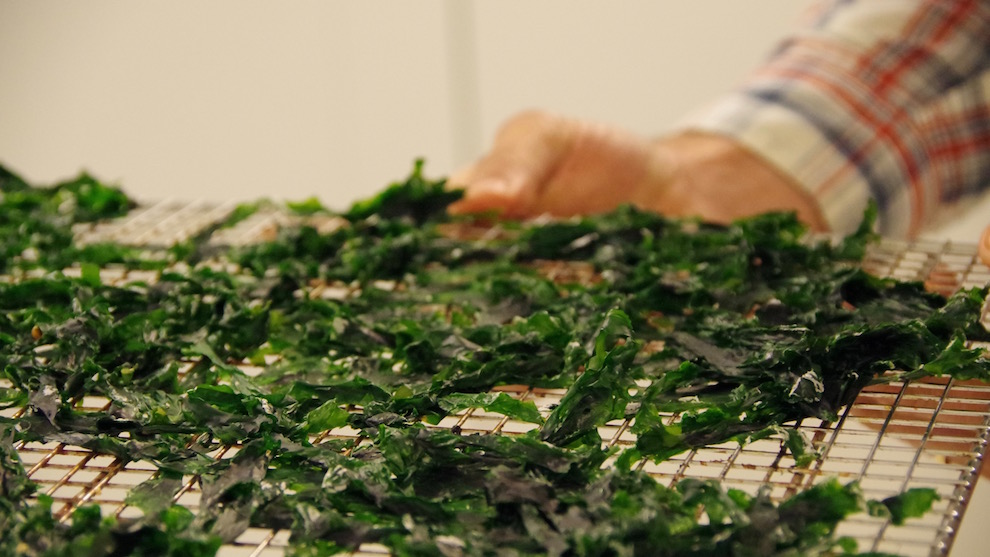
caption
Dardenne says there are two or three weeks during the year when sea lettuce tastes the best.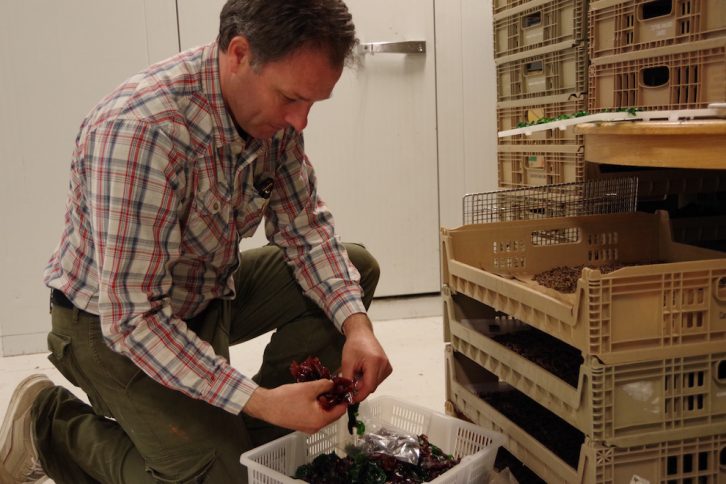
caption
Dardenne sorts sea lettuce from dulse at the back of Agricola Street Brasserie.Today, local forager Fred Dardenne harvested rose hips and sumac berries, two wild foods that he’ll include as ingredients in this week’s Wild Food Boxes.
Later in the week, the fruits of this harvest, collected from across Nova Scotia, will end up in many local restraurant kitchens, but also in the kitchens of people like Dalhousie student Katie MacLeod.
Since signing up for the Wild Food Boxes in December, MacLeod says she’s learnt a lot about wild foods through items she didn’t know were edible.
“I think what’s really neat about it is that Fred is doing local food, like many people are, but really bringing more of an exotic side to it, which is the most intriguing part,” she says.
Her favorite recipe so far has been a rose hip reduction (a type of sauce).
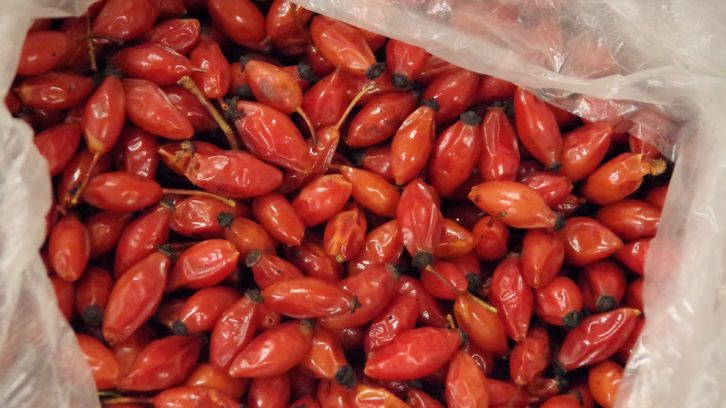
caption
Rose hips make a delicious rose hip reduction (a type of sauce), says Katie MacLeod.Recipes help
When Dardenne first started the Wild Food Boxes in December he knew that in addition to providing ingredients, including a recipe would be essential.
While many people might know how to use wild mushrooms, when it comes to rose hips and caribou moss or seaweeds, it’s a different story. Last week’s food box included the ingredients to make seaweed caviar.
“Sometimes people don’t know these products and we can help them with the box, with three or four different products and with a recipe,” says Dardenne.
He adds that about a dozen people are currently signed up for the boxes, but he hopes to increase that number in the spring to 50 or 60 people.
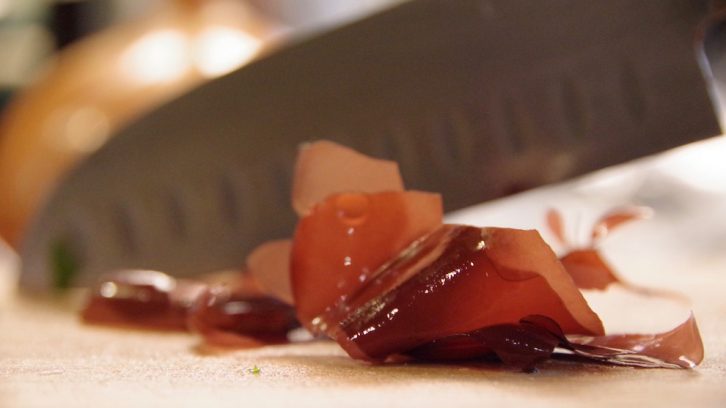
caption
For last week’s seaweed caviar recipe, dulse, sea lettuce, and kombu are finely chopped.Dardenne, originally from Belgium, started foraging for wild edibles at an early age with his family. When he moved to Nova Scotia eight years ago, he was surprised to find that few people were taking advantage of the province’s natural bounty.
But, it didn’t take him long to build up his inventory of wild goods in this part of the world. He says in eight years, he’s foraged around 200 different species.
Since he first started, the demand for wild foods has only grown.
Increasing interest
In the last five years, cooking with foraged foods has become increasingly popular among chefs in Nova Scotia, says Lia Rinaldo, food writer and managing director of the Devour! Food Film Festival.
“There were always a few sort of pioneers who were doing it from the beginning, but right now it’s definitely quite a trend,” she says.
Rinaldo says people want to know more about where their food comes from and foraged foods have an ultra-local allure.
“It’s just one more level of understanding more about your food, about being able to trace it right to the plant where it’s growing, right here in Nova Scotia,” she says. “I think people are very keen about that.”
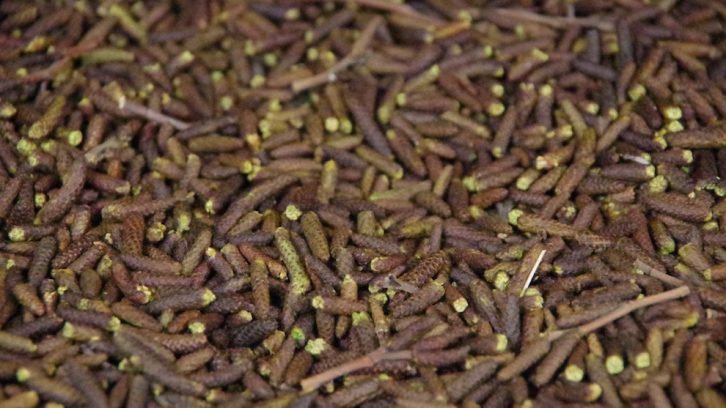
caption
Catkins, Dardenne says, can be dried and ground into a powder to make a natural pepper.There are many other CSA (Community-Supported Agriculture) food boxes available from farms across Nova Scotia, but according to a list compiled by the Ecology Action Centre that was last updated in February, Dardenne is the only provider of foraged food boxes in the province.
Daily foraging
For Dardenne, foraging is a full-time job; he never misses a day.
“Cold, hot, that’s no problem. Sometimes, (it’s) 20 degrees under zero and sometimes (plus) 30 degrees,” he says.
Even in winter, he says, there is food to be found. He finds certain berries are even tastier in winter because they contain more sugar at that time of year.
An important part of foraging, says Dardenne, is sustainable harvesting. He never takes more than what can be naturally replenished, and that’s what he teaches others to do.
At the end of his day, he stores his harvest at the back of Agricola Street Brasserie, one of the restaurants he supplies with wild goods. In a little corner next to a walk-in fridge, sea vegetables lay drying on stacks of trays. There’s deep green sea lettuce dried to a fine crisp, red dulse with a residue of snow-white salt crystals and olive-green kombu.
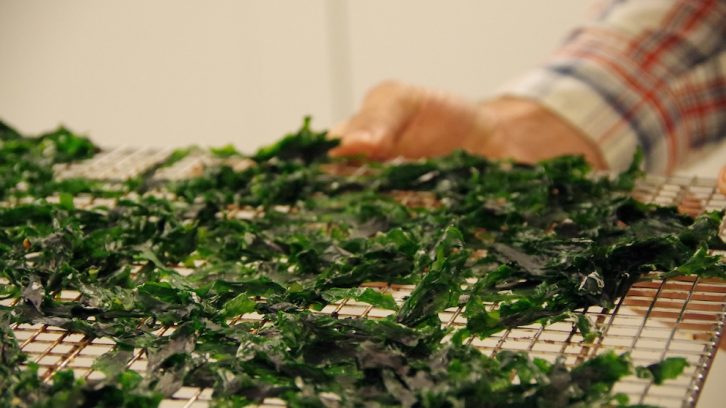
caption
Dardenne says there are two or three weeks during the year when sea lettuce tastes the best.While it is possible to live off a diet made up mostly of foraged goods in Nova Scotia, it’s not something to rush into.
“I started with 20 to 25 per cent of my alimentation the first year (as wild foods), and now I eat wild foods 60 to 80 per cent,” he says, noting that shift was done gradually and carefully.
In foraging and consuming wild foods, caution is key, says Dardenne; any confusion in identification can have severe consequences. It’s also important to know that some wild foods should be eaten in moderation, while others are fine in larger quantities, he says.
Dardenne hopes the Wild Food Boxes can serve as a gradual introduction to wild foods. With simple recipes and a few ingredients, he hopes the boxes teach people about wild edibles without overwhelming them. In addition to selling foraged foods, he is also working with local chefs to develop small ready-made products like sumac jelly and seaweed caviar, which people can easily use at home.
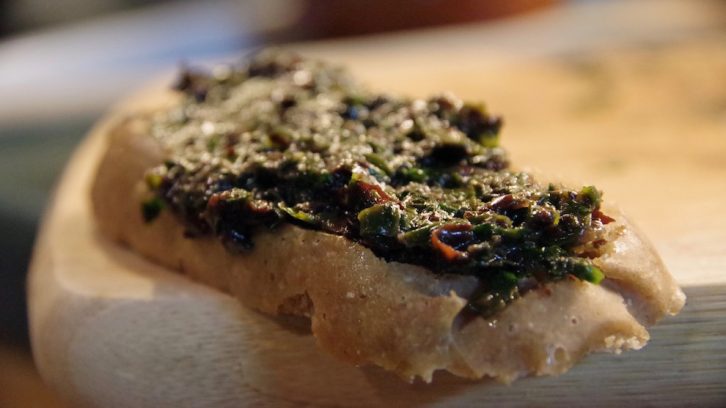
caption
Seaweed caviar is one of the recipes Dardenne hopes to make into a product for sale.Weekly wild food boxes cost $22 and Dardenne’s foraged foods can be found at various farmers’ markets in the area as well as on the menus of several local restaurants.


M
Michal